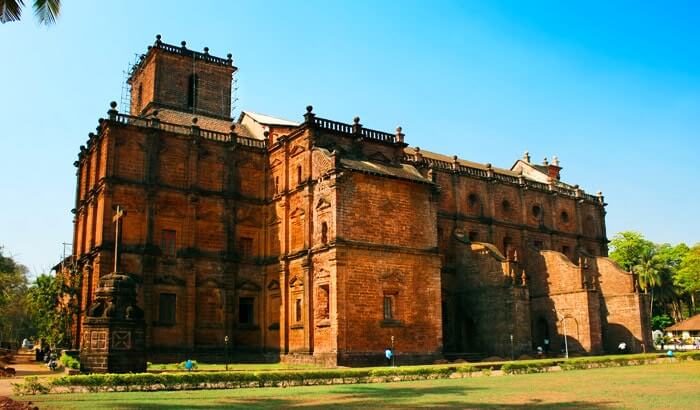Goa is not just a tourist destination because of its beaches, food, drink, and nightlife. Religious tourism is also a major reason for people visiting the state. Thanks to the Portuguese, the state has churches in almost every nook of every village. There are a number of temples dedicated to the Hindu religion which are also widely visited. However, Goa’s previous capital of Old Goa holds a charm of its own. A cluster of churches that are known all over the world. Superb architecture and their highly religious importance are what draws tourists and even pilgrims in large numbers. And the most famous of these is the Basilica de Bom Jesus, home to the relics of St. Francis Xavier.
How did St Francis Xavier end up in the Basilica de Bom Jesus?
The Basilica de Bom Jesus is undoubtedly Goa’s most famous church. More so because it houses the mortal remains of St Francis Xavier to this very date. Located in Old Goa, this church is a UNESCO World Heritage Site. Old Goa is approximately 10 kilometres away from Panjim.
St. Francis Xavier is the Patron saint of Goa and his feast is celebrated with religious fervor and pomp every year on 3rd December. But how did he land up at the Basilica de Bom Jesus? In fact, you cannot speak about the Basilica de Bom Jesus without knowing about St Francis Xavier.
St. Francis Xavier – Goa’s Patron saint
St. Francis Xavier was a Navarrese-Basque Roman Catholic missionary born in the Kingdom of Navarre on April 7, 1506. As young Francis grew, he was surrounded by war. Navarre was a much-desired kingdom in those times and was eventually conquered by King Ferdinand of Aragon and Castile. After the war, when Francis was old enough, he was sent to study at the University of Paris. While there he roomed with his friend, Peter Favre. The pair met and were heavily influenced by Ignatius of Loyola, who encouraged Francis to become a priest. Along with Ignatius of Loyola, he created the Order of the Jesuits.
In the meantime, Portugal was busy colonizing India. The Portuguese settlers in India and elsewhere were losing their faith and Christian values. The King of Portugal asked the Pope to send missionaries to the region to help restore people’s values. Francis was among these missionaries but was sent as a Papal Nuncio. A Papal Nuncio is a diplomat who takes up permanent residence in another country to formally represent the Church there. He arrived in the region and colony of Goa, India on May 6, 1542.
St. Francis Xavier’s work
He had his work cut out for him. Not only did he have to help settlers and locals re-learn their values but he also tended to the sick and children. Goa was not the only place in Asia that Francis traveled to. His work took him to Japan, which he was keen on visiting and also China. While on his travels, he eventually took ill with a fever and passed away on Sancian Island (Shangchuan) in China on December 13, 1552.
Francis was buried on Sancian until February 1553 when his body was removed and taken to Malacca where it was buried at a church for a month. Then one of his companions moved his body to his own residence for the rest of the year. In December, his body was moved to Goa. His remains are now housed in a silver casket enclosed in a glass case at the Basilica de Bom Jesus.
The Basilica de Bom Jesus
The church, whose name “Bom Jesus” means ‘good Jesus’ or ‘infant Jesus’ to whom it is dedicated, is a magnificent example of Baroque architecture. With years of wear and tear, the building is not in the best condition but it is still a work of beauty and lovely to look at.
The imposing black granite façade has on it, at the top, the letters, “HIS” which are the first three letters of Jesus in Greek. The Basilica de Bom Jesus is a work of art, an exquisite combination of the Doric, Corinthian and composite styles. It measures 183 ft in length,55 ft in breadth, and 61 ft in height. The main altar is 54 ft high and 30 ft broad. If you would like to know more about the interiors, this article will help a great deal.
The Basilica de Bom Jesus is open to visitors every day between 9 am and 6:30 pm. On Sundays, people can visit from 10:30 am onwards, closing time remains the same as other days. Entry is free however one must dress modestly to enter the church.
Information credit – GTDC website/ Wikipedia
ItsGoa/MAY/KDGP


